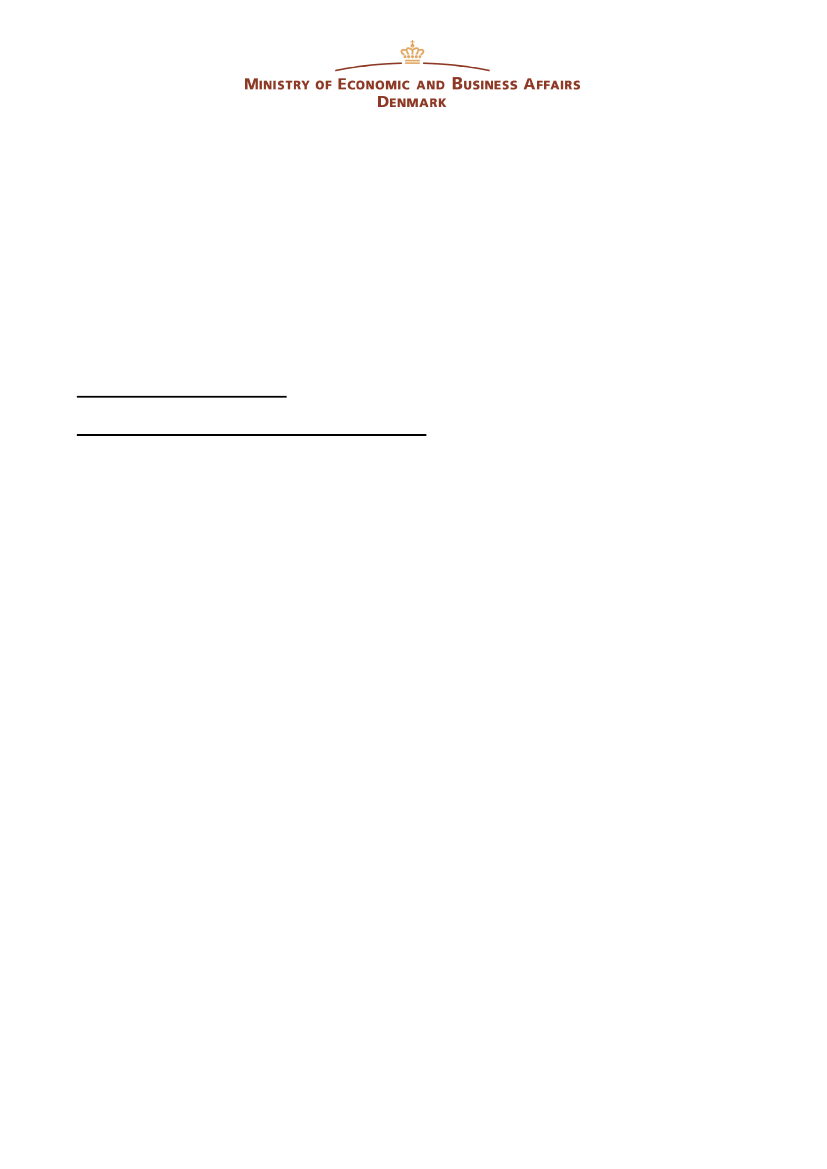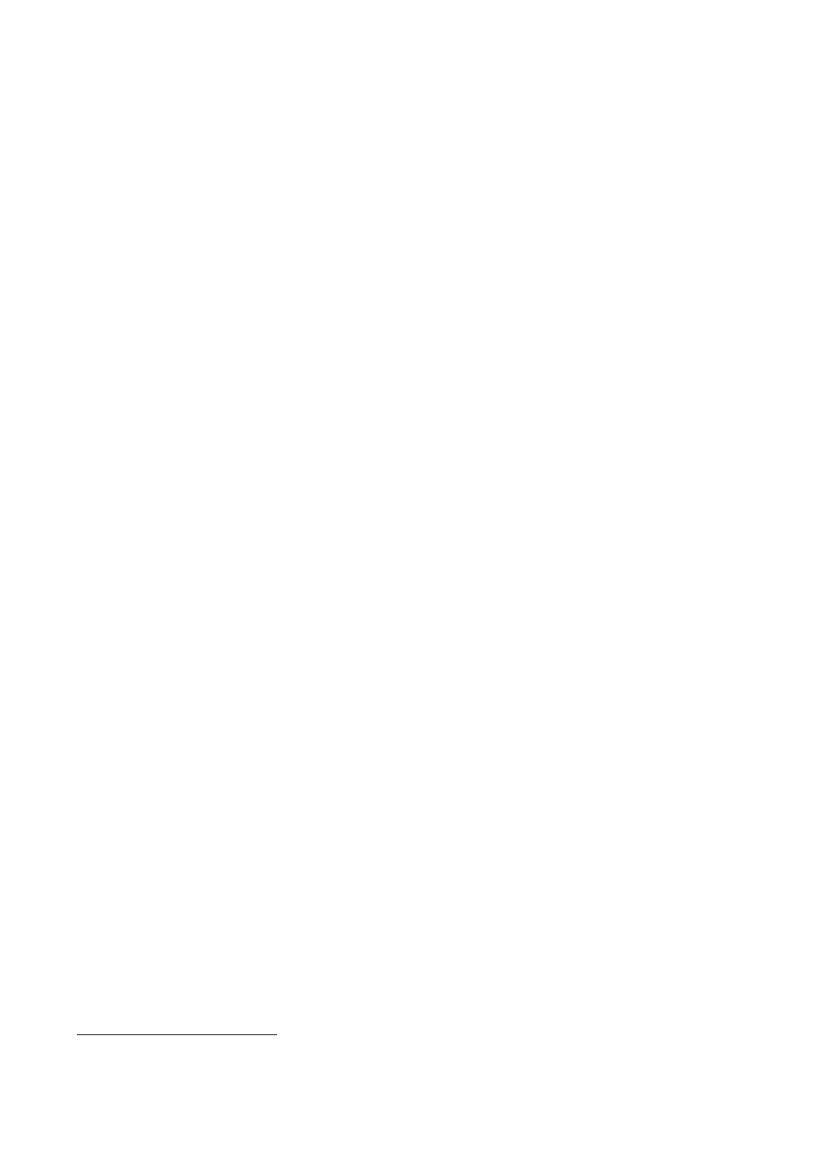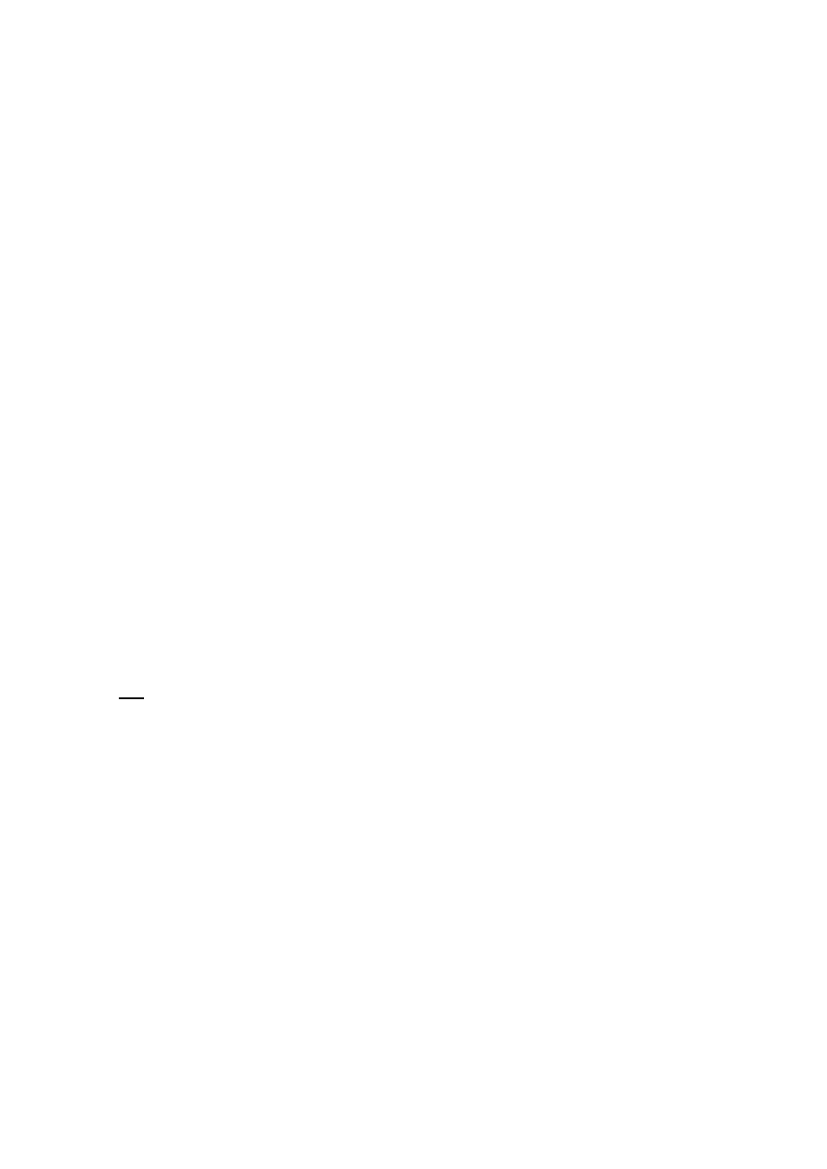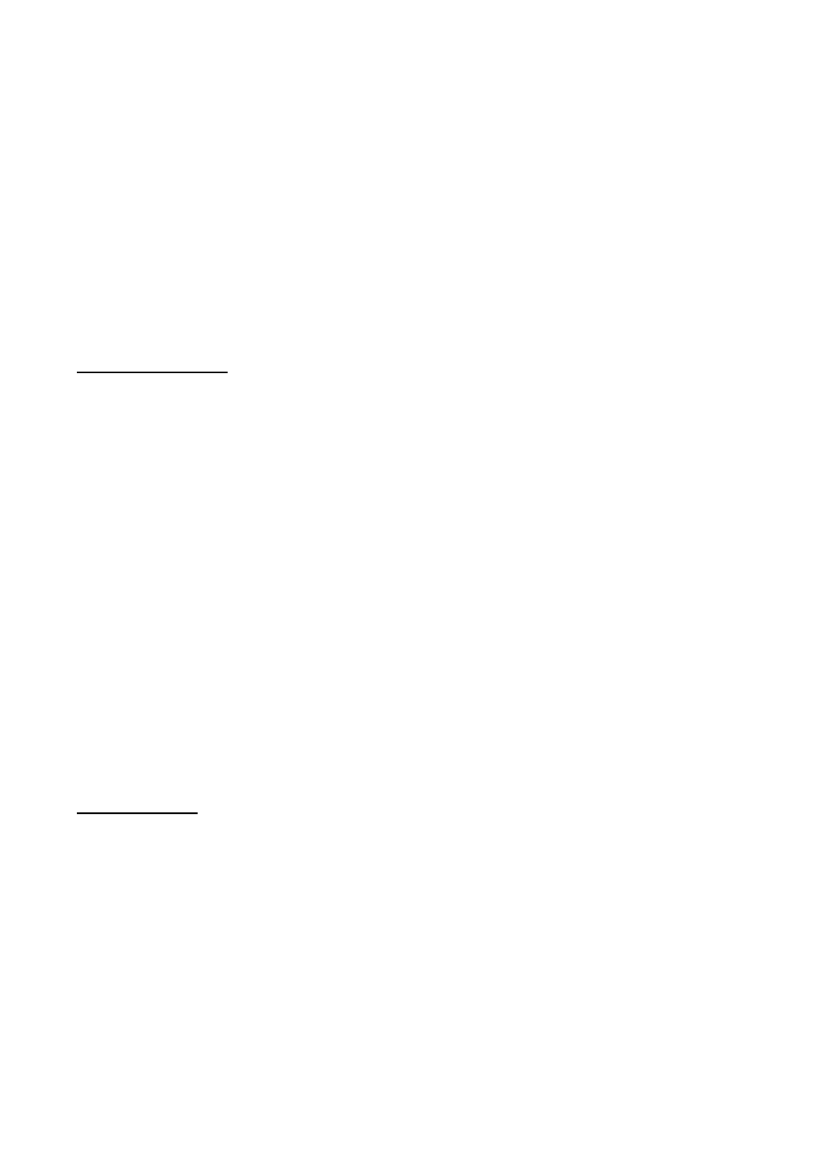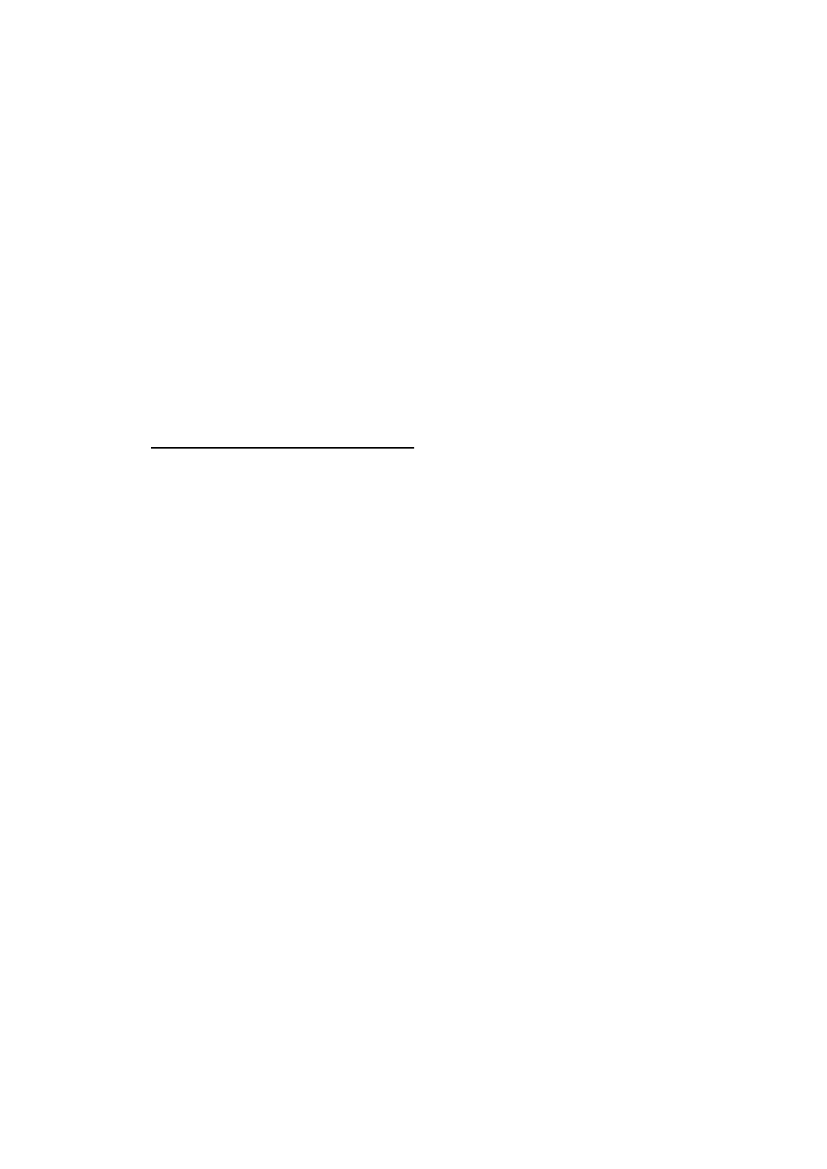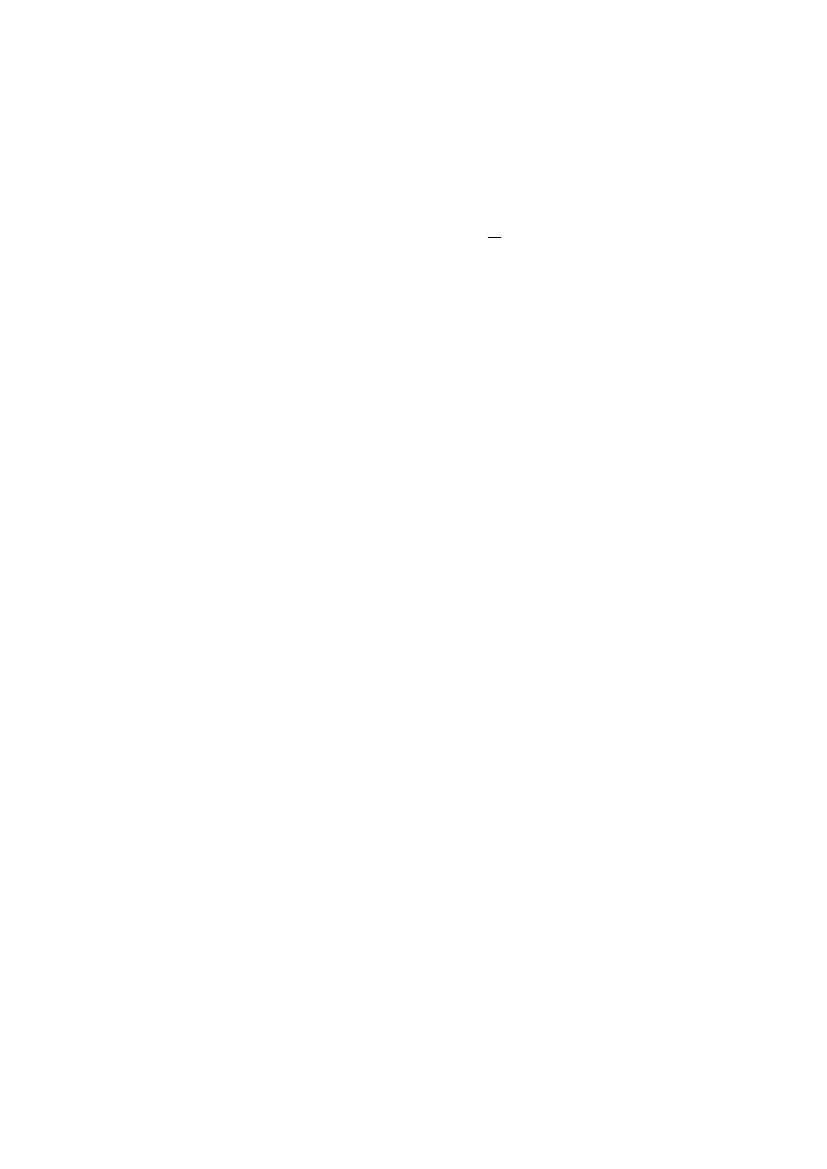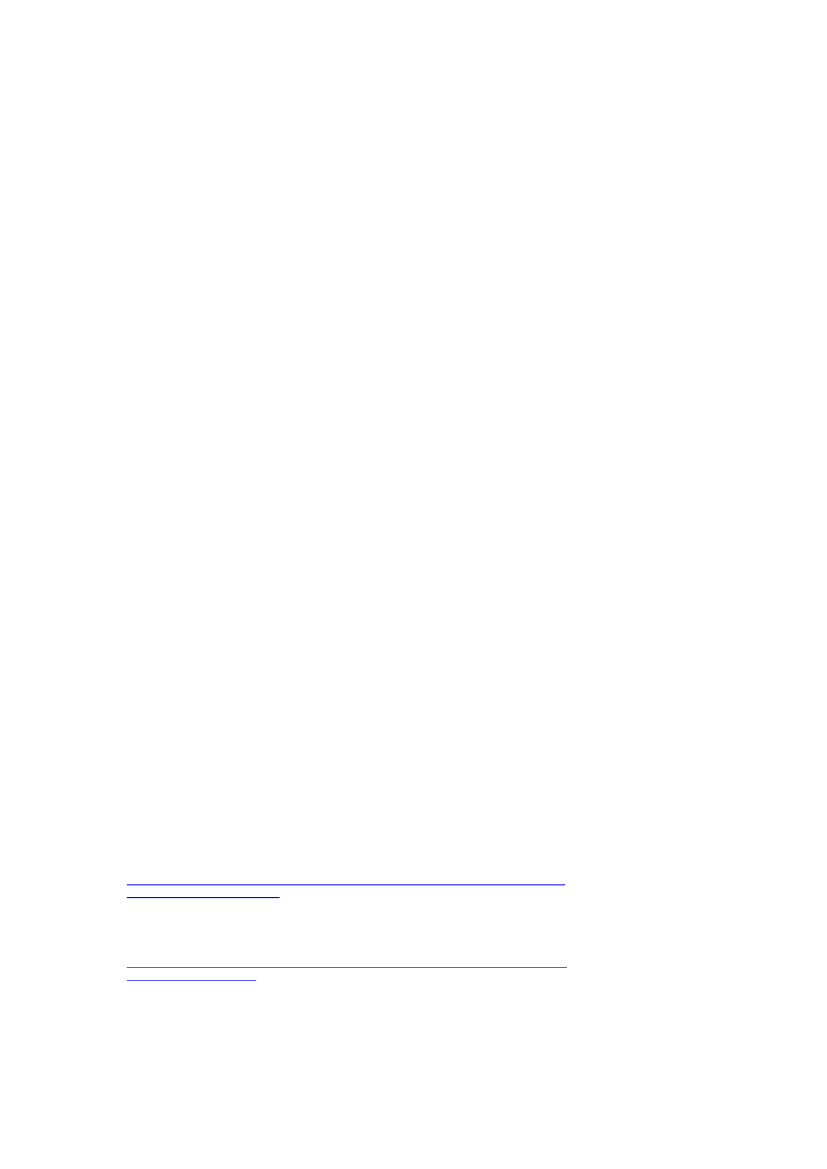Europaudvalget 2011-12
EUU Alm.del Bilag 34
Offentligt
NOTE
05 October 201111/06122-1/ath-dep
Danish respond to the consultation on the review of the Com-munication on short-term export credit insuranceSection A: General QuestionsA 1. Supply of trade finance and credit insurancea) by publicly supported insurers/export credit agencies (ECAs) inthe short-term (risk period of up to 2 years)Type of instruments used
All standard export credit instruments are used: buyer and suppliercredit guarantees, financial guarantees, reinsurance, pre-shipmentguarantees, and project delivery guarantees.Geographical breakdown
At present, Denmark offers cover via the public export credit agencyEKF in the worldwide short term market as follows:oReinsurance of private market insurers for marketable risks accord-ing to the Temporary Framework measures. The waiver expires on31 December 2011oReinsurance of private market insurers on buyers in the non-marketable area. Ends when one of the parties cancels the agree-mentoInsurance of SME exporters’ one-off exports of capital goods to asingle buyer in the marketable area with a tenor between 181 days –two years. The waiver expires on 31 December 2012.oInsurance of single one-off exports of capital goods to a singlebuyer in non-marketable area.Pricing method and premium levels per instrument
Under the reinsurance agreements with the private sector the premiumis determined by country risk category and amounts to 0.9 per cent ofturnover for the lowest-risk countries, 1.2 per cent for the medium-riskcountries and 1.4 per cent for the highest-risk countries. For risk wherethe credit insurance company is willing to cover minimum 50 per cent
2/16
on their own books, the premium is equal to the credit insurer’s pre-mium, however not less than 0.5 per cent of turnover.The 180 days – two years insurance of SME exporters follows the pre-mium guidelines in the Arrangement on Official Supported ExportCredits (the Arrangement), adjusted for the shorter credit period. Onthe International Letters of Credit, EKF charges the same premium asthe banks charge for the uninsured part.Breakdown according to the eligibility conditions
EKF does not in general operate with eligibility criteria. The only ex-ception is the insurance of one-off exports of capital goods to a singlebuyer in the marketable area. This product in the marketable area isonly available for SMEs (as defined by the EU).Potential role of the private insurersIn 1992, Denmark privatised its entire short term business, and estab-lished a state owned limited company. This company was sold to one ofthe big three private transnational export credit insurance companies in1995.Under the temporary reinsurance schemes as well as a reinsuranceagreement for buyers outside the EU/OECD the private insurers havethe direct contact with the exporters. Generally, all export credits up to180 days are always fronted by the private insurers.Size of State backed schemes (annual budget, annual take-up)The public export credit agency in Denmark, EKF, is equity financedand growth normally has to be achieved endogenously. Hence there isno annual budget with an annual take-up. EKF’s equity must amountto at least 6 per cent of EKF’s guarantee exposure. This principle ap-plies to all export credits, i.e. both short term and medium/long termcredits.The maximum exposure reinsured by EKF under the ST scheme as per30 June 2011 was DKK 1.45 billion. Approximately 2/3 hereof is on EUand OECD countries.The total premium income in 2011 until now amounts to DKK 34 mil-lion. DKK 15 million is premium under the Temporary measures, andthe remaining amount is premium from other ST products.Competition with private insurers on marketable risks
EKF does not compete with the private insurance companies in Den-mark. They cover short term risks of revolving nature, in the
3/16
EU/OECD. The main business of the private credit insurers lies withincredit terms of 30-90 days.EKF covers credit insurance of single good transactions, mostly withcredit terms above 180 days, including in the marketable area afterdemonstrating lack of private market in this segmentInformation on domestic trade financing and credit insurance.
EKF does not cover domestic credit transactions.b) by publicly supported insurers/export credit agencies (ECAs) inthe medium to long term (risk period of more than 2 years)Please provide information on State interventions in the market over theperiod 2005-2010 on the following elements:Type of instruments used (e.g. insurance, reinsurance, guarantee, di-rect financing, factoring) and business volume per instrument.
All standard export credit instruments are used: buyer and suppliercredits, financial credits, pre-shipment guarantees, and project deliveryguarantees. On a temporary basis, due to the on-going credit crisis inthe banking sector, also direct lending is offered via banks to Danishexporters until the end of 2011 as notified to the European Commis-sion.Geographical breakdown (volume of business covered according tothe policy holder's country and to the buyer's country)
EKF has issued new medium long term cover in 2011 in the range ofDKK 5.3 billion. The five largest markets in 2011 are the Russian Fed-eration, Turkey, Brazil, India and Mauritius.Pricing method and premium levels per instrumentPremium is charged in accordance with the OECD Arrangement onOfficially Supported Export Credits1Breakdown according to the eligibility conditions (e.g. size of theentitled enterprises, sectors, etc.)
The Arrangement is implemented in the EU by 2001/76/EC Council Decision on theapplication of certain guidelines in the field of officially supported export credits. A newpremium system entered into force on 1 September 2011 on all export credits underthe Arrangement. (The Matzhuhn-Drysdale Package)
1
4/16
The two largest export sectors are wind energy and cement. During thepast three years, on average, SMEs have counted for2 % of our MLTexposure.Potential role the private insurers may play in operation of thescheme, including in the selection of the beneficiary
The private market does at present not participate in the MLT market.EKF conducts yearly dialogue meetings with the private credit insurersto continuously gauge the interest of the private market in the exportcredit market.Size of State backed schemes (annual budget, annual take-up)
EKF is equity financed and growth normally has to be achievedendogenously. Hence there is no annual budget with an annual take-up. EKF’s equity must amount to at least 6 per cent of EKF’s guaran-tee exposure. Surplus equity reverts to the State budget unless otherwiseagreed by Parliamentary act.Mid-2011 the premium income amounts to DKK 305 million. For theperiod 2005-10 EKF’s net profit was DKK 1.8 billion.Information on domestic trade financing and credit insurance (cover-ing transactions within one Member State), including in particularvolume, proportion in the overall business terms and conditions.
Not applicablec) by private insurers/credit providersNot applicableA.2. Impact of publicly supported schemesa) Legal framework governing publicly supported export creditagencies (ECAs)Are publicly supported ECAs subject to the same regulation (e.g. re-garding capital requirements, taxation, bankruptcy) as private insur-ers/credit providers?
EKF is not regulated in the same way as the private insurers.If not, please explain any differences and their potential impact on themarket, and competition thereon.
EKF is an independent administrative unit under the Danish State thatis regulated by law. The legal basis for EKF consists of the Act on
5/16
Eksport Kredit Fonden with amendment, Order on the administrationof the Act on Eksport Kredit Fonden, and the Statutes of Eksport KreditFonden. The Act on Eksport Kredit Fonden was approved by the Com-mission on March 1, 1996 (State Aid no. 856/95).EKF’s commitments must always be within a capital range of 6-10 percent of the fund equity, and the Danish States guarantees all EKF’scommitments. If the capital ratio exceeds 10 per cent, the exceedingamount will revert to the State. As a state-owned agency, EKF cannotgo bankrupt, and EKF does not pay taxes.b) Operation of publicly supported export credit agencies (ECAs)Please provide factual information on any differences there might be be-tween the activities of the public ECAs (in short, medium and long term,domestic and export segments) and the corresponding activities of poten-tially competing private insurers/credit providers, in particular:Differences in pricing levels;Differences in type of cover;Difference regarding other conditions (minimum required / averageretention level, prudence of risk assessment, service provided e.g. inrespect of the length of the application and claim processing etc.)
Please explain how these differences may in your view affect the marketand competition thereon, if appropriate by distinguishing between shortand medium to long term as well as domestic and export segments.EKF’s mandate is to cover extraordinary risks i.e. risks that the privatemarket is not interested in covering. In practice this means that EKFonly provides insurance for one-off export transactions of capital goodsand mainly operates in the non-marketable area, i.e. credits with atenor of two years or more, and short terms credits to countries outsidethe Annex to the present ST Communication.When the private market withdrew from their market area of revolvingshort term credits at the end of 2008, EKF introduced reinsurance ofthe private sector. As regards the marketable area, this was subject toapproval by the EU Commission under the Temporary Measures. Inaddition EKF recently introduced cover of one-off capital good exportsof SMEs with credit periods of 180 days – two years after proving a lackof private market cover.As far as the pricing is concerned, EKF follows the premium regimedetermined in the OECD Arrangement on Officially Supported ExportCredits most recently updated in 2011.Regarding the other conditions mentioned, EKF applies the principleslaid down in the OECD Arrangement On Officially Supported ExportCredits, the ‘Council Directive 98/29/EC of May 7, 1998’ (the MLT
6/16
Directive), as well as the rules contained in the WTO agreement onSubsidies and Countervailing Measures, Annex 1, item j) and k).A.3. Market developmentsPlease provide factual information about the latest market trends bothas regards the short- and medium to long term segments, and cover-ing different forms of financing (insurance, guarantee, direct financ-ing etc.).It is EKF’s experience that the majority of both public and private in-surers are still using insurance as their main product, although severalpublic insurers (including ourselves) have increased the level of directlending. This is due to the lack of funding for export transactions above3-5 years in the banking sector.For ECA supported ST credits the Temporary Measures ends on 31December 2011. However, – at least at present – it is unclear, whetherthe private insurers are ready to insure all commercial ST risks in thecountries mentioned in the Annex to the Communication at the samelevel as before the financial crisis.In Denmark, the short term market is most adequately described as amaximum of 180 days, and hence non-marketable risks are equal torisk periods above 180 days.Furthermore, it has become clear that the uniform handling of EU asbeing one risk zone does not reflect the perception of risk in the market.What was the impact of the global economic crisis as regards theavailability of private trade financing and credit insurance? Has theneed and/or form of State intervention changed? Has the crisis af-fected on a lasting basis the scope of risks taken on by the market (i.e.the risks considered 'marketable)?
The impact of the financial crisis was that almost all private marketinsurers dramatically reduced the cover ratio on almost all their mar-kets, leaving a huge insurance burden to the public ECAs. The Tempo-rary Measures initiated by the Commission in 2009 was a result of thereduction of the ST private insurance market. The ST private marketinsurers have not fully restored their capacity, and they focus on theircore business: whole export turnover on a 30-90-day revolving basis.The playing field has not only changed for insurance. The bankingsector in the Euro zone according to the European Central Bank con-tinues to present the enterprises with net tightening of the credit stan-dards. This is also the situation in Denmark according to DanmarksNationalbank (the Danish central bank). The lending surveys are at-tached and they clearly show that banks so far have not been able to
7/16
ease the credit standards for enterprises since the financial crisis.What are the forecasts for the years to come? Do these trends affectall types of trade financing and credit insurance equally? Do they af-fect all sectors equally? Please explain any differences.
A forecast of the risk appetite and activity of the private credit insurerswill depend on the length and strength of the financial crisis, in par-ticular in an increasing number of EU countries. The private creditinsurers in Denmark have to EKF expressed their doubts as regardstheir willingness to re-enter all EU/OECD markets at pre-crisis level asof 1 January 2012 when the temporary reinsurance agreements expire.It is EKF’s experience that reinsurance is the most eligible instrumentto measure the risk appetite in the private insurance sector. EKF ex-pects that as the ST market recovers, the number of applications forreinsurance from the private insurance market will decline. Reinsur-ance ensures that there is no clash of interests between the public andprivate insurers because the contact with the exporters takes placethrough the private insurers.Are there any specificities as regards domestic trade financing andcredit insurance (covering transactions within one Member State),both in terms of latest market trends the impact of the crisis and theforecasts for the years to come?
Not applicable.A. 4. Rationale of public interventionUnder which circumstances would you consider there would be apotential need for public intervention in the area of short-term and/ormedium to long-term trade financing and credit insurance? In otherwords, are there specific situations (e.g. type of instrument, duration,sector etc.) where the market is not able to provide trade financing orexport insurance?Pleaseexplainwhatthesesituationswouldbe.
The rationale for public intervention in Denmark is ensuring that Dan-ish exporters have the necessary access to export credit insurance. Themoment the private credit insurers withdraw from the market and ex-press no interest in covering otherwise creditworthy business, there isroom and need for orderly public intervention i.e. orderly in terms ofadequate premium levels and conditions and allowing easy exit.As regards the present definition of marketable risk, public interventionwas found to be necessary at the onset of the crisis due to massive with-drawals of limits by the private credit insurers. Denmark chose to coverthis gap by allowing EKF to reinsure private insurers on the Danish
8/16
market. EKF is experiencing a gradual withdrawal of demand for rein-surance due to improvements in certain market. However, some rein-surance is maintained, and in some markets demand has even in-creased.In addition Denmark has experienced a gap in cover for SMEs: insur-ance of one-off exports of capital goods with a tenor of 181 days – 2years. The private insurers have declared that they almost never insurethis segment, not even before the crisis, and in particular the bankshave decreased their financing of this segment. This was the reasonwhy Denmark in spring 2011 notified the unavailability of cover to theCommission, and in July received a waiver to insure this segment untilthe end of 2012.As regards type of instrument Denmark experienced distortion of com-petition between EU exporters due to the fact that some EuropeanECAs have established daughter companies operating as market play-ers. These companies could increase cover and capacity in the market-able area without having to go through the cumbersome process of no-tification.In your view, in terms of need for public intervention, are there anyfundamental differences to be considered between short and mediumto long term and between export and domestic trade financing andcredit insurance? Please explain.
Based on our experience, the definition of short term being equal to atwo-year risk period no longer reflects market conditions. It is out ofsync with the market perception represented by banks, exporters andinsurers. In the Danish market the type of transaction and the creditperiod is the deciding factors of what seems to be marketable i.e. theprivate market covers an exporters portfolio of repetitive deliveries usu-ally with credit terms of 30 to 90 days and occasionally up to 180 days,while the public agency, EKF, covers exports of single transactions tosingle buyers.The difference between short term and medium/long term operators isthat the first is a market operator, who will adjust his appetite on risksto the possibilities of making a profit/losing money, whereas the latter isa public ECA, who is driven by a political will to support the country’sexporters where the private market does not operate. It is not profitdriven, but is obliged to balance over time, cf. the WTO rules on subsi-dies.In EKF’s experience practically all export credits of single transactionswith a credit period more than 180 days are non-marketable, as under-lined in the conclusion in the MARSH Report attached to this reply.As already explained, EKF does not operate on the domestic market.
9/16
SECTION B: THE COMMUNICATIONSECTION B: THE COMMUNICATIONB.1. ScopeThe current Communication only covers one instrument, i.e. short-termexport credit insurance.Do you see a need to broaden it to include other types of State inter-ventions? Please specify for what instrument and why.
EKF does not see a need to include other types of State interventions inthe ST Communication except perhaps regulating the daughter compa-nies of state-owned ECAs that today are not under obligation to notifytheir activities to the EU. Other types of state intervention are alreadyregulated by various EU legislative acts, such as the Communication onState guarantees, state loans, etc.Do you see a need to broaden it to include medium to long-term fi-nancing? Please explain why.No. Denmark does not see a need to include medium long term financ-ing in the ST Communication.On the contrary, it is EKF’s experience that in Denmark certain SMEsneed assistance to achieve financing of their exports. To assist themEKF has obtained a waiver from the Commission for a 181 days – to 2years special credit facility for SME exporters. It has not been possiblefor these exporters to insure their exports in the private market.This segment was only notified for SMEs, but it cannot be excluded thatalso large companies may need access to this facility to cover tenorsbetween 180 days and 2 years.The medium long term area is already regulated by several interna-tional agreements: The OECD Arrangement on Officially SupportedExport Credits, the ‘Council Directive 98/29/EC of May 7, 1998’, andthe WTO Agreement on Subsidies and Countervailing Measures. Ac-cording to these rules, export credits must break even, i.e. export pre-mium must be adequate to cover losses and administrative costs overtime.
B.2. 'Marketable' and 'non-marketable' risksThe current Communication is built on the distinction between 'market-able' and 'non-marketable' risks. 'Marketable risks' are risks associated
10/16
with short term export credit buyers in the EU and certain OECD coun-tries. In these cases, Member States shall in principle not intervene. Allother countries are considered to be non-marketable and state interventionto provide insurance cover for risks related to them does not require noti-ficationtoandapprovalbytheCommission.Do you consider the definition of the marketable countries/risks ap-propriate?Pleaseexplainwhy/whynot.
Marketable Countries:In our opinion the definition is too broad, as also seen during the fi-nancial crisis. The level of unavailability of cover was very different inthe 35 countries in the ‘marketable’ group. The international creditranking of these countries varies from AAA to CC (Standard & Poor’s),which represents 21 different categories of country classification, and isthus not a homogeneous group of countries, and the outlook for them isvery different.In our opinion there will still be a list of countries whose creditworthi-ness come January 2012 will be far behind the level before the finan-cial crisis, and this situation may well continue through the comingyears. Among such countries there is a number of EU member states.Therefore, the classification as a ‘marketable risk’ country in themeaning of the Communication should be decided on another basisthan just belonging to the European Union and/or the rich OECDcountries see our suggestion below under B.3.Does the scope of marketable risks differ for different types of instru-ments or policy holders (in particular in terms of duration, countries, sec-tors, type of companies)?Marketable termsAs stated above under A.4., the marketable risk area is, according tomarket studies in the Danish market, revolving short terms credit witha maximum credit period of 30-90 days, sometimes 180 days, but nevermore than that. Credits of more than 180 days are de facto non-marketable.Most likely, the situation in Denmark is not basically different from thesituation in the rest of the EU: In Denmark as in almost all EU coun-tries, the private insurance market is dominated by three big transna-tional credit insurers, whose core business is short term insurance ofthe exporters’ whole export turnover on a 30-90 days revolving basis.In a few countries a fourth local insurer may be present in the national
11/16
market, often a daughter company of the national state-owned ECA.Please explain what, in your view, are the decisive elements to qualifya risk as marketable or non-marketable.
The most decisive element to qualify a risk as ‘marketable’ is the creditrisk period, followed by the distinction of whether we are dealing withsingle buyer export transactions or multiple buyers and revolving ex-port transactions. The shorter the risk is, the more marketable it is.But also elements as the buyer’s creditworthiness, the sector in ques-tion, and the political and economic situation in the buyer’s countryshould be taken into consideration. A reliable legal environment thatmakes it possible to recover claims is also valuable. All these elementsare reflected in the credit rating of the country.B.3 The escape clauseUnder the Communication, an escape clause allows under certain condi-tions State intervention where the 'marketable' risks become 'temporarilynon-marketable' owing to the unavailability of private insurance or rein-surance capacity (point 4.4). The Temporary Framework introduced atemporary procedural simplification regarding the demonstration of theunavailability of cover for short-term export-credit.Do you consider that the condition for demonstrating the unavailabil-ity of cover under point 4.4 of the Communication (evidence fromtwo large, well-known international private export credit insurers aswell as a national credit insurer) is appropriate? Please explainwhy/whynot.No. In Denmark, and in the rest of the EU, the three big transnationalinsurers in the private market are competitors, and general statementson their withdrawal from certain markets are sensitive and even confi-dential information, and it might not be in the interest of the privateinsurers to share that information.Besides, a withdrawal is almost never complete (Iceland is, to ourknowledge, the only example of a total withdrawal) so when is a partialwithdrawal or reduction of the level of insurance a result of a marketfailure?Accordingly, Denmark is of the opinion that a better instrument todemonstrate unavailability of cover should be introduced, replacing thepresent country list in the Annex, as well as the escape clause, see be-low.Do you consider that the procedural simplification of the TemporaryFramework for demonstrating the unavailability of cover may also bejustified after the crisis period for which the Temporary Frameworkwas adopted?
12/16
Please explain why/why not.Denmark did not find that the procedure for demonstrating the un-availability of cover under the Temporary framework was justified. Asstated in a letter to the Commission on August 19, 2009, (attached).Denmark found that the Temporary Framework lead to a differenti-ated, uneven treatment among Member States in the following areas:countries eligible for State supported export credits, premium charged,maximum cover and the mechanism of state intervention in the shortterm export credit insurance (reinsurance/direct insurance).Denmark is of the opinion that the procedure was very cumbersome,time consuming and, - to a certain extent - distortive. Though the ideaof finding four exporters that had received refusal of cover may haveseemed simple, especially in the larger countries, the Danish experiencewas that application of this requirement was difficult and applied dif-ferently by the Commission when handling the many notifications un-der the Temporary Measures. EKF’s experience was that some coun-tries had to provide many more exporter statements than others leadingto distortion of competition between EU countries and four refusals ofcover do not reflect availability of cover by the private market. For ex-ample the private credit insurers had completely withdrawn from pro-viding export cover to Iceland, therefore no exporter had applied forcover and therefore they had received no recent refusals and thereforeDenmark could not provide four refusals on Iceland, even though therewas no private market.In conclusion, Denmark does not consider the proof for unavailabilityof cover appropriate as required in the present Communication andwould prefer another solution, see below.Please also explain what would in your view be the most appropriateevidence to demonstrate that a risk is temporarily non-marketable(please explain both in relation to the source of the evidence and interms of type of information, e.g. statistical data, market report, let-ters, etc.).
Denmark suggests deleting the existing escape clause and replacing itwith a dynamic system based on more objective criteria that can be ap-plied equally in all countries regardless of the system of public interven-tion chosen.The Annex of marketable countries should be based on the creditwor-thiness of the countries, and not on their belonging to the EuropeanUnion or the OECD.To assist the Commission in setting-up a new system several instru-ments could be considered:
13/16
1) Basing the marketability on the creditworthiness of each country.2) The marketability could be based on regular (semi-annually/annually) reports from the three big international private in-surers to the Commission,3) A panel of [three] private and [three] public ECAs would advise theCommission of the marketability of the countries on a [semi-annually/annually] basis.4) Insolvency ratio published by the countries and/or the private insur-ers,Based on one or more the above instruments, the Commission shouldpublish a dynamic list of marketable countries on a semi-annual orannually basis.Such a mechanism would ensure an adequate response to market de-velopments and would ensure transparency, operationality and equalitybetween the private and public export credit insurers, as well as amongthe public insurers themselves.Do you consider that the condition for using the escape clause underpoint 4.4 of the Communication regarding the alignment of premiumrates with the rates charged elsewhere by private export credit insur-ers for the type of risk in question, is appropriate in order to allowState interventions that correct market failures while at the same timeminimising distortions of competition? Which other conditions mightbe appropriate? Please substantiate your view.Once the unavailability of cover in the private market has been deter-mined, and thus a State intervention accepted, the premium should bedetermined according to usual standards used in public ECAs. Butconsidering that the risk is deemed non-marketable, the premium ratewould most likely be significantly higher. The Commission could con-sider introducing language to this effect or even minimum rates to beapplied.Is a similar escape clause in your view also appropriate for other in-struments of trade financing or credit insurance? Please explainwhy/why not. And if so, what would in your view be the most appro-priate evidence to demonstrate that a risk is temporarily non-marketable?
As mentioned above, Denmark suggests that a better system for statingthe unavailability of cover should be introduced. At present, Denmarkdoes not see a need for expanding the scope of the communication cf.under B1.
14/16
Do you consider that the intervention of the State under the escapeclause leads to distortions of competition at the level of the companiesobtaining insurance?Please explain why and how any such distortion could be minimised.
No. The intervention of the State should not lead to distortions of com-petition if the intervention is carried out in a conducted and coordi-nated way by the Commission.As stated above, the present method chosen by the Commission led toseveral distortions of competition among the Member States, due to thevarious ways of proving the unavailability of cover, as well as the fact,that the waivers on the individual countries were given to the MemberStates on an individual basis, and not on a common basis.In EKF’s experience reinsurance minimises the potential for distortion.By reinsuring the private insurers they could gradually and individuallydecide to let the reinsurance mechanism fade out as the market on theindividual countries improves.Point 2.5 of the Communication provides a specific escape clause forSME with limited export turnover (i.e. annual turnover not exceedingEUR 2 million). Do you consider that specific conditions for demon-strating the unavailability of cover for risks incurred by SMEs, withor without a limit on export turnover, are needed? Please explainwhy/why not.
To our knowledge no country has notified under this special SMEclause. It is the Danish experience that the three big private insurerswithin their core business of credits between 30 and 180 days do notdiscriminate the SMEs.SECTION C: OPTIONS FOR THE FUTURE OF THE SHORT-TERMEXPORT CREDIT INSURANCE COMMUNICATION/OTHERISSUESTIONS FR THE FUTURE OF THE SHORT-TRM EXSURANCEDo you have any other comments on the application of the Communi-cation or proposals for its modification on issues other than the onescovered in the previous questions?Denmark would like to mention that ST export credit insurance is onlyregulated in the EU. All major public insurers outside the EU, such asEDC (Canada), US-EXIM (USA), SINOSURE (China), K-SURE (Ko-rea) and NEXI (Japan) insure national export in competition with pri-vate insurers. This fact should be taken into account by the Commis-sion when redrafting the ST Communication.As for the Danish experience with the marketable risk period being upto six months and not 2 years, it should be recalled that this suggestionwas included already in the IMCC Final Report in 2005.
15/16
The Commission should aim at ensuring a future Communication thatis transparent, operational and forms a level playing field for the Euro-pean public ECAs.If the Commission fears that public insurance of marketable risks willincrease dramatically through daughter companies to public ECAs, theCommission could chose to increase its monitoring of such daughtercompanies.Based on your replies above, do you consider that the Communicationshould (a) be maintained, (b) modified or (c) allowed to expire in De-cember 2012?Please substantiate your answer.
Denmark considers that the Communication should be modified (b) toensure that European exporters have access to the necessary exportcredit insurance.The ‘marketable’ risk in a new Communication should be limited to 6months and/or differentiate between the type of transaction, as provenbyamarketstudyinDenmark.Denmark also suggests deleting the escape clause in the present Com-munication and replacing it by a dynamic, semi-automatically ratingprocedure as described above.Please provide copies of any documents or studies which may berelevant for this review.
Denmark attaches the following papers:1. LettertotheCommissiondatedAugust19,2009
2. Conclusion of MARSH’s report of the private sector3. Danmarks Nationalbank (the Danish central bank) LendingSurveyfor4thquarter2009:http://www.nationalbanken.dk/C1256BE2005737D3/side/3C6A3FD4B0685B76C12576A9005AE024/$file/NU20100113TT.pdf
4. Danmarks Nationalbank (the Danish central bank) LendingSurveyfor2ndquarter2011:http://www.nationalbanken.dk/C1256BE2005737D3/side/3F75D956CB7CE322C12578C60038E939/$file/NU20110708TT.pdf
5. ECB Lending Survey:http://www.ecb.int/stats/pdf/blssurvey_201107.pdf?87bdec10beb9bb5ba50041eb6b2ebd53
Please indicate whether the Commission services may contact you forfurther details on the information submitted, if required. YES.THANK YOU FOR RESPONDING TO THIS QUESTIONNAIRE
16/16
INSURANECTION C: OPTIONS FOR THE FUTURE OF THESHORT-TERM INSURANCE COMMATION
